
Make a killing restoring an old muscle car – If you kid yourself about the costs.

It seems like a terrific idea. Buy an old car that needs fixed up, that way it won’t cost as much. You could spend money on it over time, and when it is done, it will be worth a fortune. We’ve seen Barrett Jackson, everything is worth a fortune.
Maybe you will be lucky and it will be even more enticing – the thought of a magical and elusive barn find comes to mind.
You know the story, some car tucked away and forgotten about, then rediscovered 40 years later in all of its dust-covered, mouse crap filled glory, often after someone’s elderly relative passes on. Maybe it is a hemi car, and the executors just want it out-of-the-way so they can settle the estate, so they sell it for $1,000.00. You clean it up, change the old gas, oil, belts, and it is ready to drive or sell for $200k. I’d be more likely to win the lottery, or get struck by lightning.
In my case the project turned out to be a Charger with a non original motor, rusted out floors, restamped quarter panels, trashed interior, and one previous owner repainted it with a terrible maroon paint job that was falling off. It could be mine for $16,000.00.
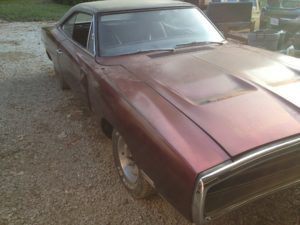
In contrast, I had just sold a 1976 Trans Am 455 4 speed, that was in great condition for $20,000.00 I bought the T/A in great condition for $18,000 a year or so earlier. All I did was drive it.
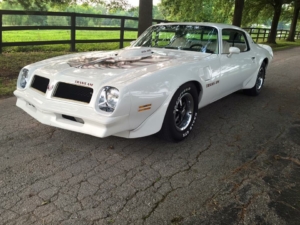
I didn’t even want a car to fix up. Always having cars that were ready to drive when I bought them, I did not even know how to fix a car up.
None of that mattered. I was already hooked in a week earlier. Floating in the lake on a hot summer afternoon, drinking beers, talking about cars and what would be cool to have, my brother-in-law, Brent, starts telling me about this old Charger a guy has near his house. “This guy has all kinds of cool old muscle cars in his barn.” Brent says “It’s bad ass, man. They all need restored, but he has a lot of cool cars. He has like six Challengers in there” Brent continues on.
“He never sells anything though.” Brent follows up in a matter of fact tone. Well dammit. You know how you want something, just because you can’t have it?
Brent said when he was talking to this guy a few weeks back, the guy was really wanting to get an 454SS El Camino. So much so that he was thinking about selling a 71 Corvette and the 70 Charger. I say “the” 70 Charger because Brent was explaining to me how familiar he was with this Charger, an original triple black R/T, that Brent has wanted since he first saw it twenty-five years earlier. Because Brent already had a full plate of vehicles, he could not get the Charger.
I’m not a brand loyal person when it comes to old cars. From Ford to Ferrari, Porsche to Plymouth, Dodge to Duisenberg – it doesn’t matter to me, they all have something I like. Brent is the same way for the most part, except when it comes to the Charger, Challenger, and Cuda, then he really gets excited about them. Excited enough, that I got excited about this Charger. It sounded so bad ass, plus the guy never sells cars, but now he is considering selling this Charger, and I might get to buy it.
When Brent called the next week to let me know that the guy was definitely going to sell the Charger, I took a look at Craigslist and noticed an ad was just placed for it an hour ago. No picture, short description, $16,000.00. Researching online revealed that pretty junky, incomplete cars were selling for the same. This one was fairly complete, ran and drove.
“How about $12,000.00?” I asked the guy, who turned out to have a name – Andy. “I’ve already got someone who says he’s driving from Vegas to get it this weekend” Andy tells me confidently as his phone is ringing. His phone has been ringing since we got there. “Alright man, I’ll give you $14,000.00 cash right now.” I offer, after kicking rocks around for a bit. “You know how Craigslist is, people will tell you all kinds of crap and then not show up.” I explain, to which Andy replies “Yea, I know, but I don’t think it will take too long to sell.” He continues “Why don’t you go to the lake this weekend, and if I still have it when you get back, I might take $15,000.00”
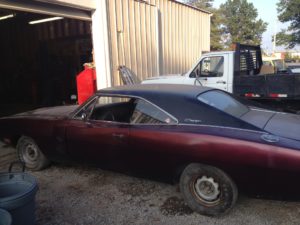
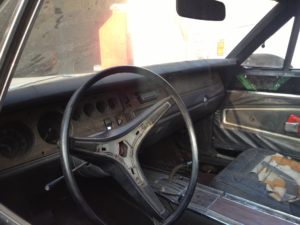
403 – That is the number of R/T Chargers that were made, in black, for 1970. Out of ~47,000 cars, 9509 were R/T’s (all colors), 375 came with gator grain vinyl roofs, 75 left the factory with a passenger side mirror. Researching the internet prior to looking at the car turned up all kinds of facts. 0 – How many Black R/T’s I could find for sale, or had recently sold. Because Dodge used a fender tag that listed all of the options a car came with, you can be sure what the car came with from the factory.
Those were the numbers in my head when I was considering whether or not just to give him the $16k. That and, how much will this thing cost to make right? What seemed certain was that the car would not still be there after the weekend. I could not make a decision, so we left.
Talking through numbers of what it might cost to restore, and what it might be worth when completed, I had come to the rough conclusion that it could be put in nice looking, driving condition for around $35,000.00, and should be pretty easily worth between $40-45,000.00 at that point. “Do you want me to text him and see if he’ll take $15,000.00 now rather than after the weekend?” Brent asked. “I’ll tell him ‘at least that way it will stay in the area while it is being fixed up, and he’ll get to see it.'”
Well, Brent’s text worked. We drove back, I gave Andy the money, borrowed his trailer, and brought it home.
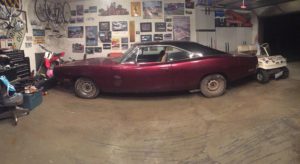
Drinking a cold beer, looking at my mile long, rusty project, I about cried. For real.
What in the hell was I thinking? I don’t even know where to start. It wasn’t about the money, I’m sure I could sell it promptly if I wanted, it was the commitment. The car is here now, and I’ve told people I was going to fix it up. To quit before even starting would feel like failure. On the other hand, getting too far into it and having to quit would be an actual financial failure in addition to the stigma of quitting. This is not the type of emotions you expect to have stirred by your new, old, muscle car.
So I quit. At least, I quit having my pity party, and started making a plan to get this thing done.
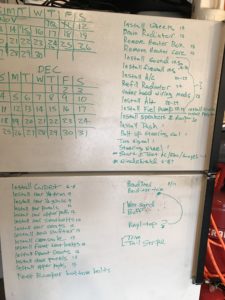
About a month into the project we could drive it on the road, although we needed goggles at highway speed, as the holes in the floors stirred up twenty years worth of dust, leaves, and who knows what else. Floor mats helped somewhat.
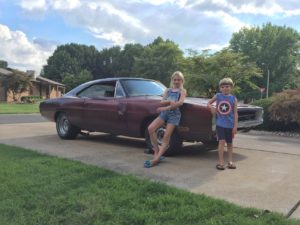
Cars have a lot of parts. Seems obvious, right? It becomes very clear when you have to touch all of them, making a determination; ok to use, repair, or replace. From wiring harnesses, to the headlight door motor, to the little plastic clips that hold the internal door handle linkage together, lots and lots of parts.
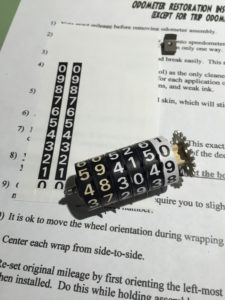
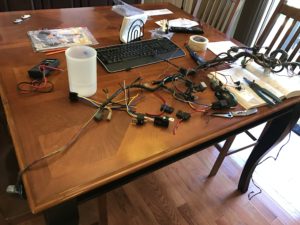
Prioritizing, scheduling, learning, and memorizing my credit card number (from repetitive use) is how I spent my next six months. I learned more than I ever wanted to know about second generation Chargers, rust, the helpfulness of some smart people on internet forums, rust, the way Dodge seemingly used whatever parts were laying next to the assembly line when they put cars together, rust, and Jake’s patients for sanding away rust. Also, we learned about Alli’s lack of patients for sanding away rust. She takes after me.
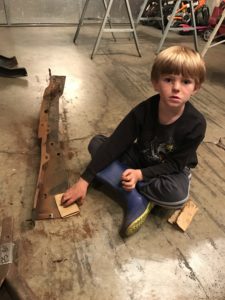
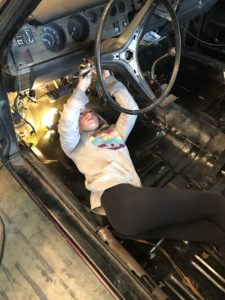
Costs blew through the $35,000.00 mark about three months into the process. There were a lot of extra’s I talked myself into along the way, such as air conditioning, that drove the costs up, but they would make for a much more enjoyable car to drive.
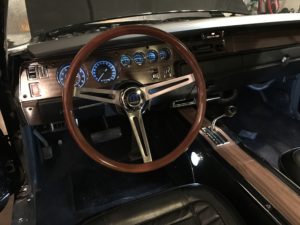
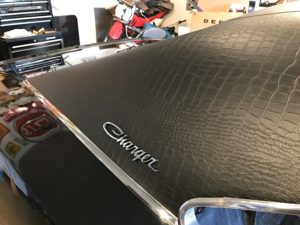
Shortly after I bought the car, Brent sent me a couple of pictures he had come across from back when the car was new. Knowing what town the car was from, Alli and I studied the background in the pictures, then used Google maps, and street views to determine the neighborhood, then the actual driveway that the car was parked in when the pictures were taken in 1970. Once the car was nearly complete, I drove to the house in the picture with the intention of asking if I could take a picture in their driveway. Knowing it would seem like an odd request, I took the original photographs with me to help explain my request.
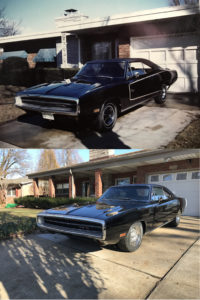
Neither a story nor an explanation were necessary. As the door flung open, the lady that answered yelled out “that is my car!” She hollered in for her husband, and we all went for a ride. Stories were told about when she bought the car new, the trips they took across the country in it, as well as a story about some kids driving the car in the snow before wrecking into a house; that occurred well after she sold the car.
When complete, the total, not including my labor, my child labor, or Brent’s labor to recover all of the seats, was around $45,000.00. If I did not keep a detailed spreadsheet of every cost, besides family labor, it would be pretty easy to kid myself about some of the cost, and feel like I spent less. It would be really easy to tell people that I spent less, and how much of a killing was made on the restoration. I don’t, and I didn’t.
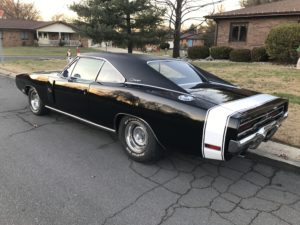
The Craigslist ad went up in early spring. It would take a while to sell a car at this price in the Midwest, so I put the ad up expecting to drive the car for a month or two before finding a buyer.
Being $10k over budget, the car needed to be sold regardless of how much we liked it, or how much time was spent on it. Memories are captured in photographs, that the kids and I can look back on. Jake and Alli lived it enough to identify the front bumper, side scoops, and tail light trim which were unique to the 1970. They will remember the experience of helping their dad. I will forever have the joy of teaching them about patients, the process of researching specific information, money, lack of patients, and the kindness of people who share an interest. After I am gone forever, I hope that seeing an old Charger brings the kids a fond memory and a smile.
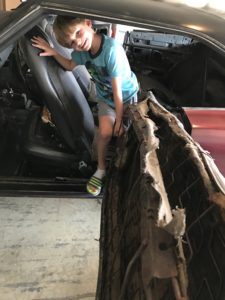
Now I can, with authority, give the wise advice that I have heard over and over, “you would be better off buying a car that has already been restored.” However, I would do it all over again – for the first time – even knowing I might lose a thousand or so dollars. Although, while it was very gratifying, I have no desire to do it a second time.
Dive on in. If you are thinking about restoring an old car, and have the means, do it. You will have a whole range of emotions going through the process. Don’t go into it expecting to make money. Plan on it taking a year. Talk to someone who knows all about the cars you are interested in, to avoid losing a lot of money. If it weren’t for my brother-in-law’s knowledge of this R/T and its somewhat rare features, I would have spent the same amount of money to restore, but it would have been worth a lot less when complete. i.e., a non R/T car cost just as much to restore, but generally sell for a fair amount less money.
Spring did not come and go with the family and I cruising around in the charger. The day after the ad was placed on Craigslist, a gentleman from Iowa made an offer to buy the car. We agreed on a price, he wired the funds, and a trailer came to pick up the car.
So long Charger.
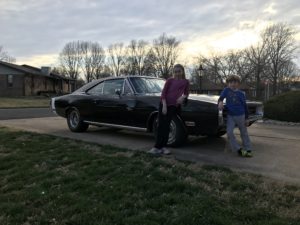
If you like this story, please like and share. Also, please subscribe to our site by using the “contact us” form here! Don’t worry, I’m not going to spam you or send junk.
You can also check out the more nuts and bolts story on the Dodge Charger forum here.
